The Ultimate Guide to Different Types of Home Theater LED Screens
As an avid movie fan or game player, it is absolutely necessary to have a high-quality home theater. With the continuous technological innovation of the LED screen industry, you can enjoy the same viewing experience as a movie theater at home. But there are many types of LED screens, and it may be difficult for non-professionals to make the right choice in this regard. In this guide we’ll explore the common types of home theater LED screens, along with their features, advantages and disadvantages. Galaxyav is a manufacturer of LED screen, we have more than 20 years of industry experience, our professional advice is worthy of your trust.
Table of Contents
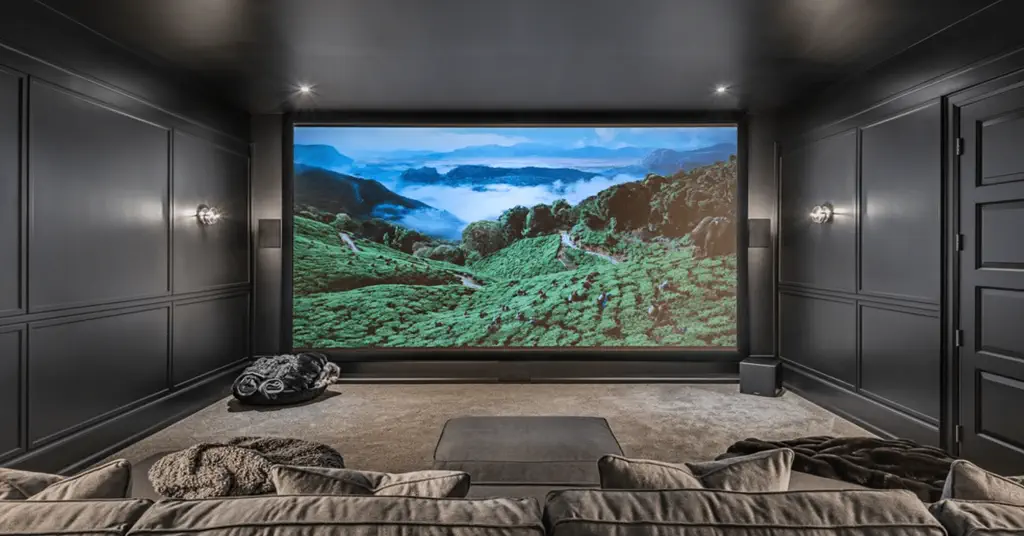
Types of Home Theater LED Screens
Full-array LED screen
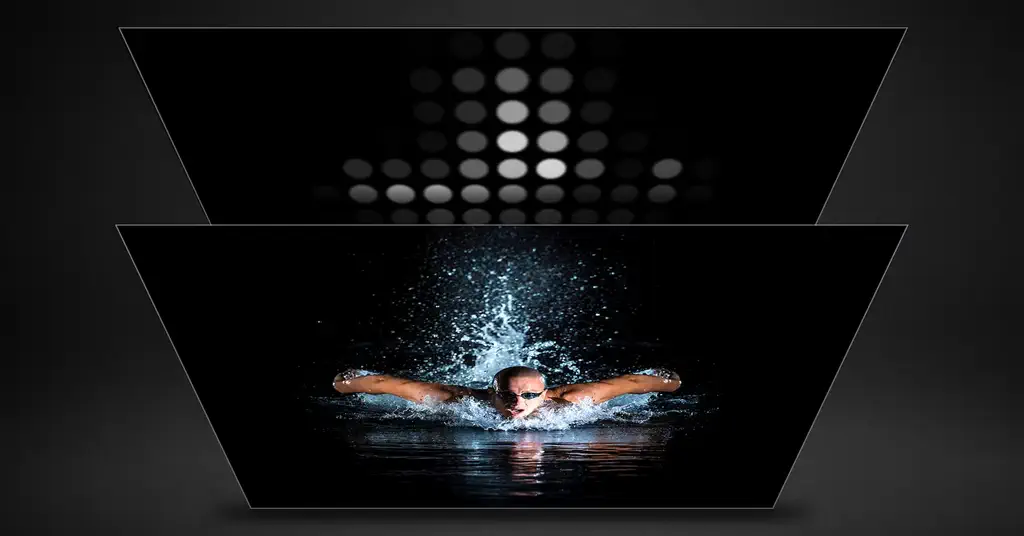
A full-array LED screen, also known as a direct-lit LED screen, is a type of display technology used in televisions and large-format displays. It is a variation of LED (light-emitting diode) technology commonly used in consumer electronics.
In a full-array LED screen, an array of LED backlighting modules is positioned behind the entire screen surface. These LED modules are evenly distributed across the screen and emit light directly behind the display panel. The LEDs in the array can be individually controlled or grouped into zones for more precise control over brightness and contrast.
The advantage of Full-array LED screen
The advantage of a full array LED screen is the increased local dimming capability. Local dimming capability refers to the ability to independently and dynamically adjust the brightness of different areas of the screen, enhancing contrast and black levels. With a full-array LED screen, the LED screen backlight can be dimmed or turned off in specific areas of the screen, resulting in deeper blacks and improved overall picture quality. Compared with edge-lit LED screens, full-array LED screens can provide more uniform brightness to the entire LED screen, reducing the possibility of uneven lighting and hotsport on the screen.
Edge-lit LED Screen
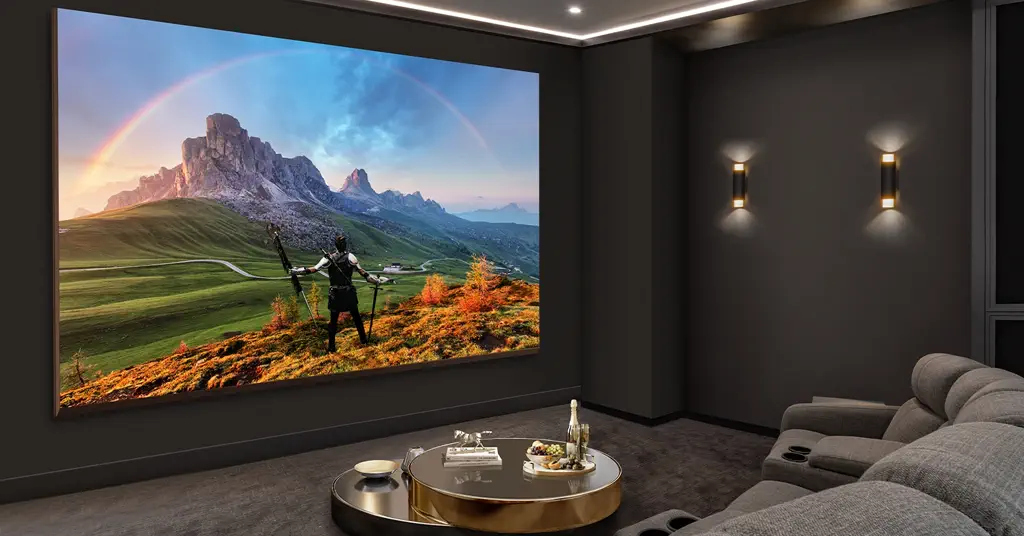
Unlike full array LED screens, Edge0lit LED screens are a variation of LED technology. It is often used in televisions, computer monitors and other large display screens. In an edge-lit screen, the LED backlight is located around the edges of the display panel rather than behind the entire screen. It uses a light guide plate or light diffuser to distribute light across the screen, and light emitted by LEDs along the edges is directed inward to the center of the screen, illuminating the entire display.
The advantage of Edge-lit LED screen
The biggest advantage of Edge-lit LED screen is its slim design. The overall LED screen thickness can be reduced by positioning the LEDs around the edges. This slim design allows the home theater to be installed in relatively small home interior spaces. At the same time, the lightweight Edge-lit LED screen does not need to install an independent suspension frame, and can be directly fixed on the wall of the home theater.
QLED screen
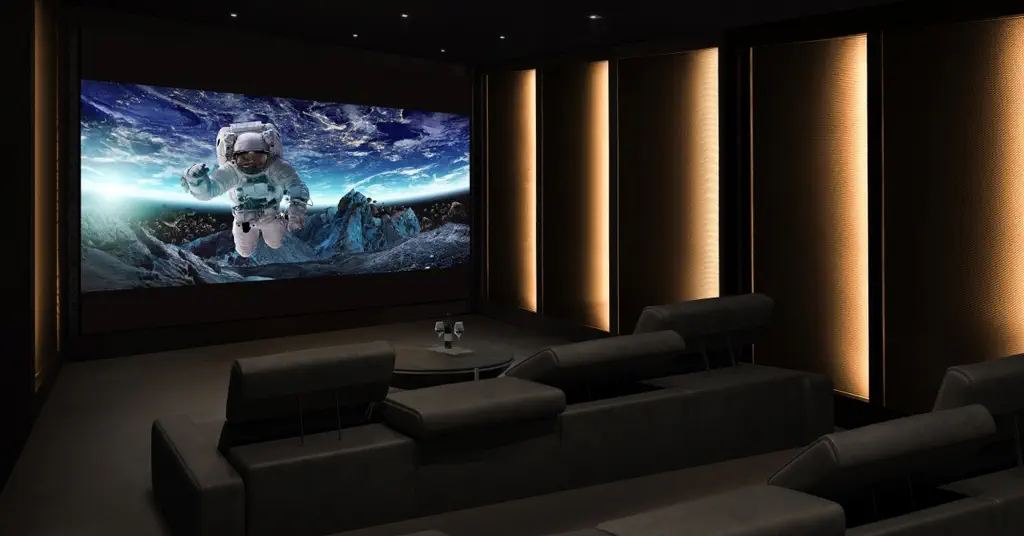
QLED is a unique LED screen display technology developed by Samsung that incorporates quantum dots to enhance color reproduction and overall image quality. The QLED screen uses a backlight system consisting of blue LEDs. Quantum dots are tiny semiconductor particles that are placed in front of a blue LED backlight. When the OLED screen is working, these quantum dots are excited by blue light to emit light of a specific color. Different colors can be produced by adjusting the size of the quantum dots.
The advantage of QLED screen
The biggest feature of OLED screen is the ability to achieve a wide color gamut. To put it simply, QLED screen has a wider range of colors than traditional LED screen. Home theaters use OLED screens to see more vivid pictures and a better viewing experience. In addition, the brightness and contrast of the QLED screen are also better than the traditional LED screen, and the home theater can obtain brighter and more vivid video images and game special effects.
It is worth noting that QLED screen is Samsung’s unique technology, which is very different from OLED technology. The two are based on different underlying technologies. The OLED screen does not require a backlight, and each screen pixel will emit light independently, providing deeper black and infinite contrast.
OLED screen
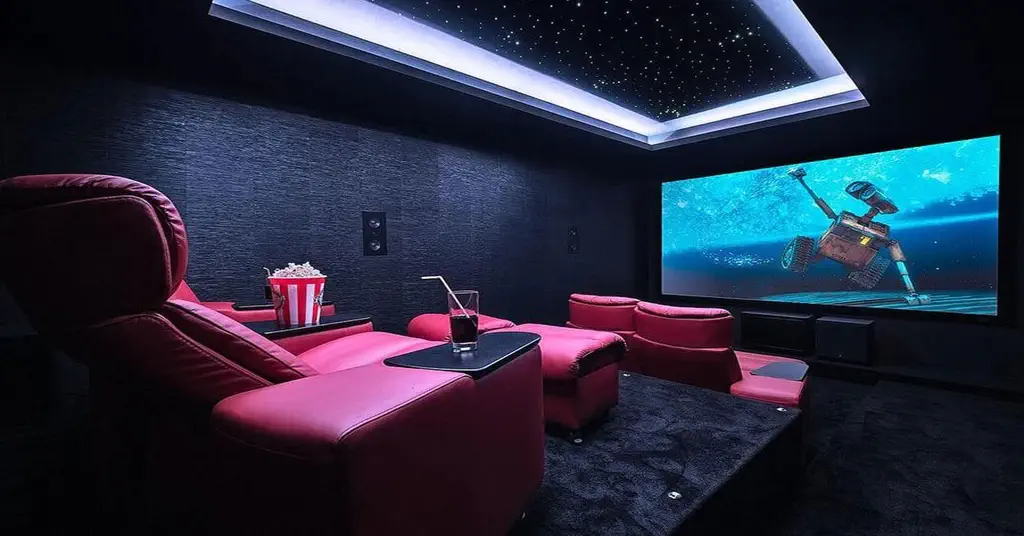
OLED screen is the abbreviation of Organic Light Emitting Diode. Unlike traditional LED screens, which require backlighting, OLED screens achieve their effect by emitting light directly from individual organic compounds, or organic molecules. When the OLED screen is in working condition, the electric current will make the organic material emit light. Each pixel on the OLED screen can emit light independently and can be turned on or off individually. Therefore, OLED screens can achieve true blacks.
The advantage of OLED screen
Compared with other types of LED screens, OLED screens have an extremely fast response time, which enables smoother moving picture switching and reduces the blurring caused by moving pictures. OLED screen can achieve wide viewing angle, when you can get the same picture quality and screen color in every corner of the home theater room.
MicroLED screen

MicroLED screen is an advanced LED screen display technology. Like OLED screens, it uses self-illuminating display technology, but instead of organic compounds, microscopic inorganic LEDs are used to create individual pixels on the screen. These light-emitting pixels are much smaller than traditional pixels, usually smaller than 100 microns, and are installed on silica gel and glass substrates to be individually controlled,
The advantage of MicroLED screen
MicroLED screen has a very good performance in three aspects of high brightness display, excellent picture contrast and long service life. MicroLEDs also have the potential for modular and scalable displays. The microscopic size of LEDs allows for high pixel densities, resulting in clearer, more detailed images for home theaters. Additionally, MicroLED screens can be assembled from small modular panels, allowing the creation of large home theater displays with seamless, almost invisible borders.
Conclusion
Choosing the right LED screen for your home theater is critical to creating an immersive and engaging viewing experience. When we consider choosing the right home theater LED screen, we usually consider factors such as the screen size, aspect ratio, refresh rate and LED screen type of the LED screen.
As a professional manufacturer of LED screens, Galaxyav recommends that you use MicroLED screens as the first choice for home theaters, because its color vividness, screen contrast, viewing angle and service life are far superior to several other types of home theater LED screens. Let you have a more comfortable and immersive film and television experience.
Others also read the following article
Want to know more about the Audio Visual Solutions?
